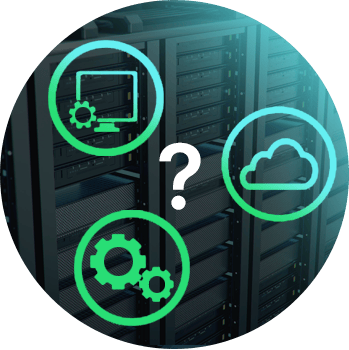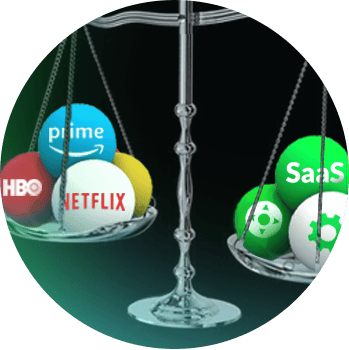
Straight to the point: do you really need Cloud and/or SaaS?

SaaS and Cloud are definitely buzzwords when we’re discussing video services, specifically OTT delivery to customers. When speaking about them, vendors offer flexibility, cost reduction, and reliability. But what do these buzzwords really mean? Let’s try to dissect what’s inside the boxes we usually identify as SaaS and a Cloud.
Simply put, we call a Cloud some remote server with a certain software running on it. Nowadays you will hardly find an operator using exclusively on-premise solutions. As a rule, at least some generic TV service solution components are deployed on virtual machines, as soon as virtual machines and virtualization become commodities. Those machines might be deployed in operator’s networks or in some third-party data centers.
Theoretically, any operator can migrate their existing solution to the Cloud. There are no hard blockers preventing such a migration. It’s only a question of rationale and positive business outcomes. It’s not that important where the operator’s hardware resides, it can be inside its network, or Amazon, Hetzner, or any other suitable data center.
So, should we as a vendor try to convince operators that they really need this Cloud transition? That’s a great question, but the answer is not obvious, as you might already have guessed. As it was already said, moving hardware and software to some remote location is not the goal, it doesn’t solve any business tasks on its own.

There are 3 main points an operator should consider when choosing a solution to rely on. First, who is a solution vendor: their experience, vision, solution completeness, and development roadmap. Second, who is a hardware vendor? Third, and the most important part of our discussion, who is going to support the solution after it has been deployed?
And here we should raise the main questions – regardless of a solution location inside an operator’s network (private Cloud) or in some rented data centers (public Cloud), how is responsible for managing and taking care of the whole solution?
In a traditional model in the past, operators usually owned their hardware, set their OS of choice up, deployed updates, etc. Software vendors were only responsible for their piece of software, that’s it. They could recommend certain hardware configurations, what to deploy on the same machine, and what – not. But that was only a recommendation, operators took their decisions.
Now we offer the so-called SaaS (software-as-a-service) model – the main thing, as we see it, operators need now. That’s what is really important today: who and how delivers TV service solution support. Operators can purchase their own hardware, and rightfully so, as they tend to have significant enterprise discounts from vendors. They can install it locally or in a data center of their choice, or even rent some remote capacity, give access and permissions, and enjoy their smooth TV service while being occupied with core business processes.

This SaaS model is not about a remote server, but comprehensive solution support provided by the solution vendor. Our SaaS model includes hardware and software support and maintenance when all an operator needs to do is some upfront hardware item replacement in case we monitor the degradation of that item. Everything else is on our super professional team: OS installation, deployments, updates, third-party apps and integrations, utilities, and complex monitoring. In other words, the solution is running somewhere in a remote location, and some expert team is taking care of it, while operators can focus on configuring their service offering, subscription plans, etc.
When we speak about typical OTT streaming deployments for media companies or content owners, our customers mostly intend to use our SaaS model in a public cloud when all server capacity for a video platform is located in some third-party data centers or CDNs in order to deliver a high-quality content to a wider audience.

When we speak about video platforms for telecom operators, our customers mostly intend to use our SaaS model in a private cloud as all operators typically have their own data center capacities. Why do we think SaaS is particularly important and beneficial? It is very easy to explain. If you are running a video service business, you have to compete with industry giants like Netflix, Amazon, HBO, you name it.
They have established user experience standards and you need to follow them or you will face churn. That means, if you want to remain competitive, you need the best possible technology for the price, consistent and providing you with all the features and “amenities” your subscribers expect. And they expect a lot as soon as they interact with all the major brands on a regular basis. It can be delivered only within this SaaS model when a vendor strategizes and develops solutions continuously, timely, and consistently with that level of tech, design, and architecture effort which is needed to stand against industry giants.
We as a vendor can see that the whole industry is moving in that direction. TV service operators of different scales, from tiny to huge ones, opt for delegating comprehensive support to vendors. Not all of them, of course, but it looks like that’s only a matter of time.

Author
Igor Rumyantsev,CTO, Smartlabs
Featured News



Smartlabs revamped DRM for Cyprian Primetel

Smartlabs Unveils 2024 Year-End Updates
